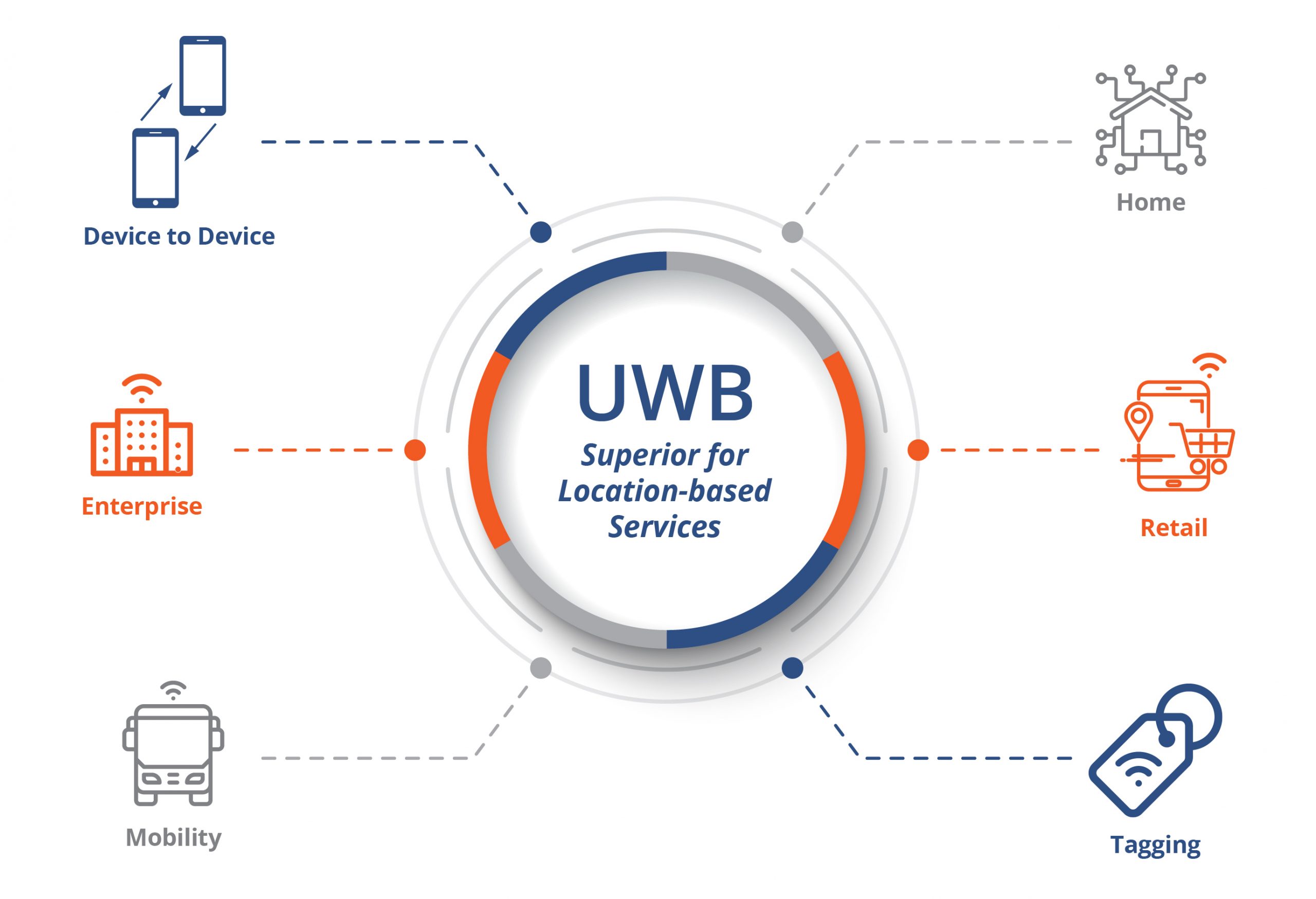Developed during World War II for secure communications and radar systems, ultra-wideband (UWB) is now being applied far beyond its military origins. This short-range wireless technology has gained notoriety in a broad range of commercial applications thanks to its precise positioning and location-tracking capabilities, combined with high-speed data transmission and minimal power consumption.
UWB facilitates attributes like spatial audio, smart home integration and contactless payment systems, which has made it especially useful in vehicle, mobile and consumer devices, enabling such advanced features as secure hands-free access, indoor navigation, contactless payments, credential sharing and item tracking. And thanks to its incorporation into Apple’s iPhone 11, it’s safe to say that UWB has gone mainstream, with implementations of this short-range wireless technology evolving in areas as diverse as healthcare, augmented reality and smart cities.

UWB is a short-range, wireless communication protocol that – like Bluetooth or Wi-Fi – uses radio waves. But it differs substantially in that it operates at a very high frequency and does not interfere with other wireless protocols. And while each of these popular technologies has its place in wireless communications, one of the most distinguishing factors is UWB’s very high level of data security thanks to time-of-flight (ToF) measurements.
By accurately measuring the time it takes for the signal to travel between devices, UWB’s ToF capability makes it harder for an external attacker to access or manipulate UWB communications, due to the inherent cryptography, random number generation and other security techniques it enables.
The 3.1~10.6 GHz spectrum band of UWB dwarfs that of WiFi and Bluetooth, which tops out at 2.4~5 GHz. By operating in a higher frequency range with more bandwidth, UWB can carry more data, making it ideal for high-speed, short-range data transmission. UWB’s accuracy down to 10~30 cm ensures more precise device location when compared to ranges of WiFi (2~3 m) and Bluetooth (1~5 m).
Although the data rate of WiFi is a bit higher than UWB, at 600 Mbps and 460 Mbps respectively, the radar-like capabilities of UWB make it an effective choice in wireless applications. For reference, Bluetooth’s data rate is 24 Mbps. And with a lower nominal range than Bluetooth or WiFi, UWB is best suited for those short-range applications that require precision timing.
The increasing demand for wireless connectivity, especially with the proliferation of Internet of Things (IoT) devices and the deployment of 5G networks, is pushing the data moving across frequency bands to new limits. The growing wireless infrastructure relies on the critical performance parameters that UWB offers.
Operating across a wide frequency range, UWB allows the transmission of a large amount of signal energy without interfering with conventional narrowband and carrier wave transmission in the same frequency band. This wide bandwidth allocation requires accurate frequency control to avoid interference with other wireless systems operating in the same frequency bands as well as to synchronize data transfers and maintain reliable communication.
Aker’s line of high-performance crystals meet the frequency control needs of UWB technology in today’s short-range, high-bandwidth applications to optimize wireless communications.

| Category | Application | Feature |
|---|---|---|
| Industrial | Asset tracking, indoor localization, monitoring systems, wireless sensor networks, smart grid | Accurate location information for personnel and equipment |
| Consumer | Smartphones, wearables, smart home systems, smart tags | More accurate spatial tracking such as precise indoor positioning |
| Communication | Wireless sensor networks, IoT, smart home | Short-range, high-bandwidth data transfer, fast and reliable wireless connections between devices |
| Automotive | Keyless entry systems, secure vehicle access, driver assistance systems (ADAS), trackers | Precise positioning |
| Application | Description | Aker Product |
|---|---|---|
| Anchor | UWB Transceiver Automotive Grade XTAL 2016 55.2MHz | C1E-55.200-8-1035-A-X2-R |
| Anchor | UWB Transceiver XTAL 2016 55.2MHz | C1E-55.200-8-1035-X-R |
| Anchor | MCU Automotive Grade XTAL 2016 40MHz | C1E-40.000-8-1030-A-X2-R |
| Tag | UWB Transceiver XTAL 2016 55.2MHz | C1E-55.200-8-1020-R |
| Tag | BLE XTAL 2016 16MHz | C1E-16.000-10-1520-X-R |
| Car Key | UWB Transceiver Automotive Grade XTAL 2016 38.4MHz | C1E-38.400-10-1010-A-X-R |
| Car Key | BLE Automotive Grade XTAL 2016 32MHz | C1E-32.000-10-1010-A-X-R |